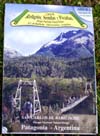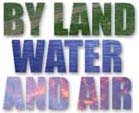| Time of year |
Summer - Jan through April. Before this there may be snow along the route and the winds are incredibly forceful, and the rain forest section would probably be impassable due to the sitting water and high ice-melt river levels. |
| Getting to Rio Villegas |
From Bariloche: Via Bariloche has a minibus line called El Valle that runs once an hour along Hwy 258 for six pesos a person.
From elsewhere: ask the bus driver if they would stop for you at the road end - they probably will.
Note: There is word of a bus that runs every Friday from Bariloche to the end of the road, 8 km from the border at El Manso. Hitching in this area is reported to be very easy, and we were offered a ride back to Bariloche within five minutes of arriving at Rio Villegas. |
Customs information
 |
The Argentinian border guards are open any time of day, but there is a fee for out of hours services. They are quite friendly and there was no charge for our leaving the country. The Chilean border guard didn't have hours posted, but as he lives in the house behind the office he is probably there at most times of the day. When coming to a large bridge after crossing the official border, continue straight (don't cross the bridge). Behind the hill with the school on it is a large clearing with the official Carabineros office. See Section three for photos of this area. There were no charges at either border, we are UK and US citizens. |
| Food availability |
At the end of the road paralleling the Rio Manso is El Manso. It consists of: a restaurant, a mini-mercado and a campsite. The restaurant provides set menus for 15 pesos a head, it all looked good and the customers seemed very happy but we didn't eat there so please let us know if you have or do. The mini-mercado carried basics such as eggs, tuna, oil, cold beer, chocolate, polenta, rice and other standard fare, it's a little over priced but probably not as much as you'd expect. We didn't camp on the site so we have no reports for it. |
Maps
 |
We carried 3 maps for this area, the most useful one was "Refugios, Sendas y Picadas" ( ISBN 987-96191-0-2 ) and is pictured left it is available for sale in book and paper stores in Bariloche. It seemed the most accurate on the route the path follows and on the relative positions of landmarks. The second was the "Al Sur del Nahuel Huapi" satellite map. It's really intended as a guide to adventure sports and hotels in the area but the satelite image that the tourist information sits on top of is very useful, particularly at the sharp right turn in Chile to head up to Lago Vidal Gormaz. We were given our copy by tourist information in Buenos Aires and didn't see it in Bariloche, although it may be available there too. The third map was "Mapas sendas & bosques: Parques Nacionales Nahuel Huapi y Los Arrayenes" ( ISBN 987-20080-3-5, scale 1:200,000 ), it shows distances along the road, shows the path further into Chile ( but not up to Lago Vidal Gormaz by the route we took ), we used this least of the three. |
Scenery
 |
Starting with river side flatlands with views of nearby mountains, a great waterfall, snow topped mountains on either side. The walking is flat and easy through remote farms and woodland all the way to the customs. After that there are a few climbs and the route gets wetter. |
Annoyances
 |
Damn big horse-flies. The really big black ones with the orange butts ( shown here ) go away when hit, and are pretty easy to hit on the whole, the smaller ones are more persistent and harder to hit, luckily there are fewer of them. The flies were quite bearable when we were there but there were far more on the Chilean side. Reportedly they get worse as the summer goes on. |
| Money |
There are no places to change money on the route, including Cochamo in Chile. It is best to change whatever you need for a few days before reaching the area, and keep at least 2000 pesos chilenos for the bus from Cochamo to Puerto Montt if that is the way you are going. Puerto Varas, a few km from Puerto Montt, is the closest place to change money. The farms along the route may accept payment in Argentine or Chilean pesos, or USD in return for food.
|




